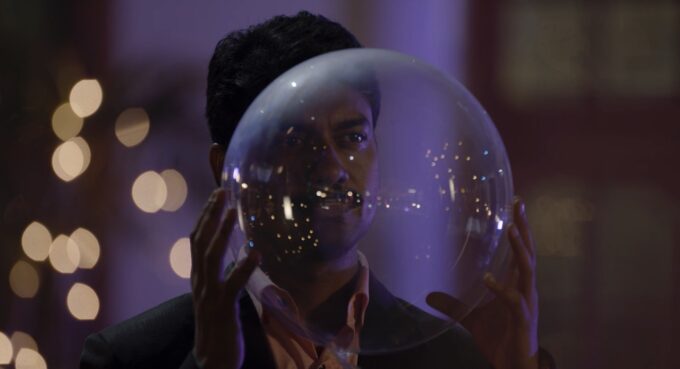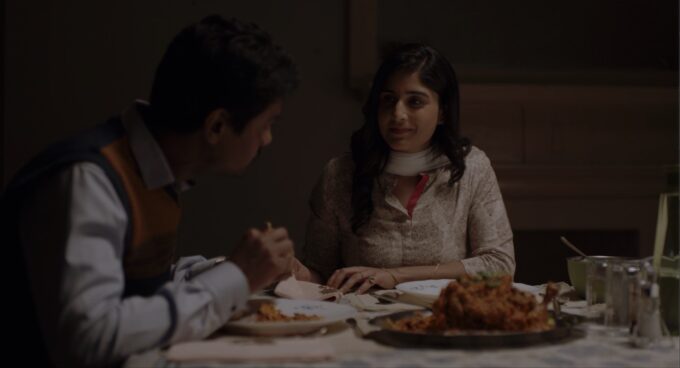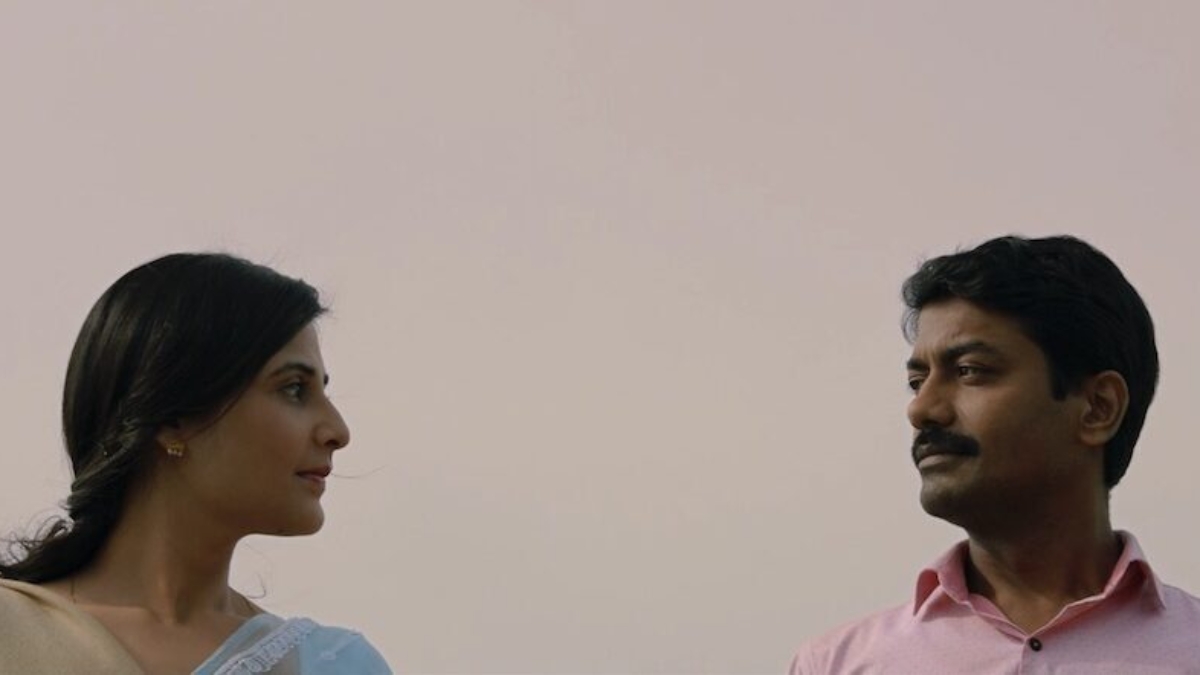Written By: Aditya Sharma
This article may contain spoilers.
Ashish Pant was driving with his father and sister through the city of Lucknow in northern India when they got into an accident with a scooter driver who had run a red light. He was only seven years old.
“Within moments, our car was surrounded by people banging our windows and asking us to come out, because they assumed the person driving the car was at fault,” Pant recalled. “My father said, ‘Keep your doors locked,’ and he got out of the car. I thought they were going to kill him. I think that image got seared into my consciousness.”
Years later, while attending Columbia Film School in New York City, that image germinated into a story that would become his latest feature film “The Knot (Uljhan).”
“The Knot” follows Shirish (Vikas Kumar) and Geeta (Saloni Batra), a married couple living in Lucknow in northern India, who drive home from a party one night and run over a rickshaw driver. Shirish is quick to move on, hiding behind the protections afforded to him by class structure. Geeta, driven by remorse, decides to hire the victim’s brother, Manoj (Nehpal Gautam), as a driver, bringing together two worlds that would ordinarily be separated by class and wealth.
I had the opportunity to speak with Pant about his film and it’s exploration of the classism that runs throughout Indian society.
The legacy of the caste system makes discussions of classism common in modern Indian cinema. Pant, however, takes this a step further, deconstructing the idea in a few ways. The first is the juxtaposition of the imagery of the accident. Shirish and Geeta, driving their modern, air conditioned vehicle, hit a man in the street on a rickshaw, a form of transportation that’s centuries old. So when Geeta hires Manoj as a driver in the aftermath of the accident, she’s pierced a societal boundary. “For me, the accident became a way for these bubbles to start bursting,” Pant explained.
The idea of a poor man entering the life of a richer family as a driver is by no means new (“Parasite”, “The White Tiger”, “Driving Miss Daisy”), but it is the ubiquitousness of that relationship and what it represents that Pant wanted to unpack.
“I’ve always thought of the car as a very interesting motif in developing countries. The car is this sort of metallic bubble: a bubble that a certain socioeconomic class uses to navigate through a society at large and it helps them feel secure,” Pant said. Throughout the film Shirish and Geeta retreat behind their car doors or their house gates in an effort to separate themselves from the world outside: Manoj’s world. “You’ll see a lot of gates and a lot of doors, and you will see Manoj slowly entering and breaking those barriers,” said Pant. “Shirish, like a lot of the upper middle class in India, thinks he can inoculate himself against disparities and pressures by erecting these barriers. It was the inefficacy of that in the long run for society that I was interested in.”

Pant also uses language as a vehicle to explore class structure. The language used by every character in the film shows where they are in the hierarchy. Manoj and Geeta’s maid both speak in Awadhi (a regional dialect of Uttar Pradesh), Shirish speaks in standard Hindi, and Geeta mixes English words and Hindi, “which is something a lot of the English school educated Indians end up doing,” Pant told me.
Then there is a scene in which Shirish, intent on securing a business loan to build himself a larger home, approaches a bureaucrat who condescends him in what Pant describes as “this absolutely pure Hindi which people don’t really speak anymore, which he uses almost as a weapon to put Shirish in his place.” That is a layer of nuance that is unfortunately lost in translation for English speaking audiences, but Pant noted that Indian audiences have a clear reaction to the film’s use of language and dialect.
Our discussion of social hierarchy also included a look at the role gender plays in the film. In particular, the way Pant constructed relationships that challenge and critique the patriarchy in Indian society. In “The Knot,” there is an inherent hierarchy in Shirish and Geeta’s relationship. “Shirish is a social climber, [whereas] Geeta always belongs to a higher class,” said Pant. Immediately, the convention of male dominance is challenged by the fact that Geeta sits above Shirish in the social hierarchy. That is a distinction that Pant makes painfully clear.
“Throughout the film, all Shirish is trying to do is plant his own flag in that family, to belong. It’s all about being anointed the patriarch. Shirish utilizes his status over Manoj, and yet Shirish is constantly getting rejected by men who are his superiors in business and in his family.” There is a scene early in the film where Shirish’s business rival, sort of a frenemy type, makes a sarcastic comment to Geeta saying her father was really smart to choose this guy, meaning Shirish, to inherit his business. “That, particularly in the conventional conservative part of India that I come from, is a slap in the face,” said Pant. It is evident that despite the fact Shirish is the man in the relationship, he is far from the patriarch he wants to be, and the levels of social status work against him.

The double standards are in play for Geeta as well. In one scene, Geeta lectures her maid who has a drunken husband and continues to have children without the means to raise them. At the same time, however, Geeta is trying to cook chicken to please Shirish even though she herself doesn’t eat chicken. “She can’t see that she is the victim of the same patriarchy as the maid she is condescending,” explained Pant.
It is with these subversions that Pant is able to effectively highlight the hypocrisy of patriarchal Indian society. “Society at large see’s Geeta as someone who comes from a higher class and Shirish as someone who is always having to compensate. Constructing that dynamic within the couple leant more friction to the idea of patriarchy because inherently he does feel inferior to her.”
As the film comes to a climax, the tension caused by the collision of two worlds, Manoj’s versus Shirish and Geeta’s, continues to build. Underneath it all, however, is an eerie feeling of similarity. Both Manoj and Shirish are engaged in the same activity: working their way up the socioeconomic ladder by hook or by crook. They are parallel in their thirst for more: more money, more power, more relevance. And yet the rigidity of classism forces their relationship towards dramatic ends as the film progresses. “The question of who was at fault is unclear and yet what happened was not just,” said Pant. “When everybody did what we all would do if we were in the shoes of those characters, in the end you can not point at just one person.”
“The Knot” is available to watch at the 44th Asian American International Film Festival. Ticket and screening information can be found here.

